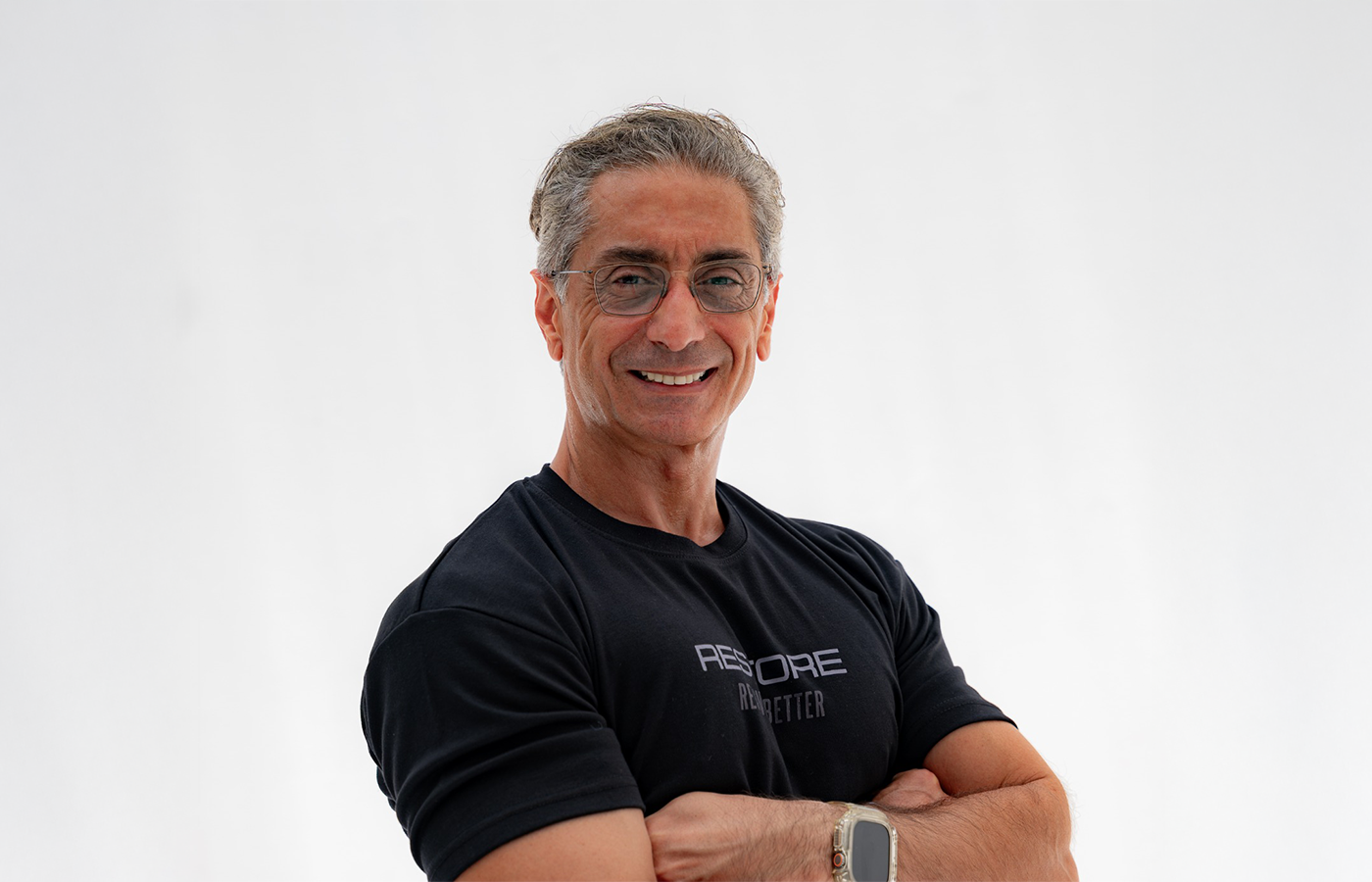
The Longevity HUB: Dr. Elie Abirached: Limitless Human – Why Mindset is the Ultimate Biohack
- What first led you to explore biohacking as a science for optimizing both body and mind?
My journey into biohacking began with a simple question: how far can the human body and mind really go? I have always been fascinated by the limits of human performance, whether through running marathons, mountaineering, or piloting, and I constantly pushed those boundaries. Combined with my academic work in longevity science, biohacking became the bridge between evidence-based research and lived experience. What I discovered is that transformation does not come from extremes, but from small, intentional shifts in daily habits that elevate performance and build resilience.
- From your experience at Limitless Human, what are the biggest misconceptions people have about biohacking?
One of the biggest misconceptions is that biohacking is all about expensive gadgets or extreme interventions. The foundation of longevity is built on simple, accessible habits: quality sleep, movement, nutrition, and stress management, many of which are free. Another common myth is that biohacking is only for elite athletes, when in fact it applies to anyone, at any age, who wants to improve energy, focus, and long-term health. At its core, biohacking is not about doing more, it is about consistently doing the right things for you.
- Why do men and women often respond differently to the same biohacking protocols?
Because their biology, hormones, and even circadian rhythms are different. For women, the menstrual cycle, perimenopause, and menopause create unique physiological needs that require protocols to be adapted at different stages. For men, testosterone and metabolic patterns play a larger role in how they respond to training, recovery, or supplementation. Personalization is key because there is no one-size-fits-all approach. The goal is to shape your lifestyle and tailor interventions to your biology in a way that actually works.
- Are there biological or hormonal factors that explain why a certain approach works better for one gender than the other?
Absolutely. Hormones shape how the body responds. Women experience cyclical changes with estrogen and progesterone, which affect energy, metabolism, sleep, and recovery. Men, by contrast, have more stable cycles but rely heavily on testosterone, which influences muscle growth, mood, energy, fat distribution, and inflammation. This explains why the same intervention can have very different results. Hormones do not just affect performance, they shape how the body responds to stress and recovery.
- Could you give an example of a biohacking method that tends to benefit men more than women, and vice versa?
Fasting is a good example. Men often respond well to longer fasting windows, while women’s hormonal cycles mean fasting has to be more flexible. At certain phases, aggressive fasting can disrupt hormones, whereas cycle-aligned fasting is more effective. Strength training is another. Both men and women benefit, but women often see the best results when training intensity is synced with their cycle. Heavier lifts and high-intensity work in the follicular phase, then restorative or mobility-based training in the luteal phase. The bigger message is that biohacking is not about extremes, it is about alignment.
- How do gender-based differences influence longevity strategies?
Longevity is not a fixed formula. It is shaped by biology, environment, and daily choices. Women’s hormonal transitions, from menstrual shifts to menopause, create changing needs for recovery, nutrition, and stress management. Men face gradual declines in testosterone and often higher cardiovascular risks, so their strategies focus more on metabolic health and resilience. These differences are not limitations, they are guideposts that help us design a personal blueprint for health. Biology provides the framework, but choices define the journey.
- Does cognitive performance respond differently in men and women to interventions like nootropics, sleep optimization, or peptide therapies?
Yes. Cognitive performance reflects the interplay of hormones, biology, and environment, so responses differ. Estrogen plays a critical role in women’s memory and neuroprotection, which is why changes often become more noticeable during perimenopause and menopause. In men, testosterone and metabolic health strongly influence focus and resilience under stress. Interventions like nootropics, sleep optimization, or peptides can help both men and women, but effectiveness depends on an individual’s baseline biology and life stage. That is why personalization always matters more than the tool itself.
- Are there risks of “one-size-fits-all” approaches in the booming biohacking industry, especially when it comes to women’s health?
Yes, and the risks are significant. Health is personal. What optimizes one person’s biology may disrupt another’s. This is especially true for women, whose physiology changes constantly across the menstrual cycle, pregnancy, perimenopause, and menopause. Yet many popular protocols are based on research done mostly on men. Applied without nuance, they risk creating hormonal imbalance, fatigue, or metabolic stress in women. Personalization is not a luxury, it is a safeguard. True optimization respects biology and evolves with it.
- How does advanced diagnostics—like blood panels, epigenetic testing, or microbiome analysis—help tailor biohacking strategies by gender?
Diagnostics take biohacking from broad advice to precision. Blood panels, epigenetic testing, and microbiome analysis reveal nutrient deficiencies, hormone imbalances, inflammation markers, and genetic predispositions that shape performance and aging. For women, these insights clarify how best to support different life stages. For men, they often highlight testosterone trends, cardiovascular health, and metabolic resilience. Diagnostics give us a roadmap so we are no longer guessing. We can design strategies that are personal, effective, and built on data rather than assumptions.
- In your clinic, have you observed any surprising patterns in how men vs. women adapt to lifestyle interventions such as fasting, cold therapy, or high-intensity training?
The pattern I’ve seen is very clear. Biology gives us the framework, but individuality always defines the outcome. What may look like a “surprising” difference between men and women is often the body reminding us that personalization is not optional, it is essential.
For example, with fasting, many men adapt quickly and see consistent metabolic benefits, while women often need a more flexible, cycle-aware approach. Cold therapy is another case, where some women experience sharper stress responses due to hormonal fluctuations, while others thrive with improved resilience. High-intensity training also plays out differently, with men typically maintaining more stable energy outputs, while women’s performance can fluctuate depending on the phase of their cycle.
What this shows is that protocols are never one-size-fits-all. The surprising part isn’t the difference itself, but how much better results are when you respect those differences. When lifestyle interventions are aligned with individual biology, whether male or female, the outcomes are not just safer, they are far more powerful.
- Do you see the next wave of biohacking becoming more gender-specific?
Yes, I do believe biohacking will evolve to become more gender-specific. The industry is moving beyond generic optimization hacks and into precision health with gender as one of the most fundamental layers of that precision.
But it goes deeper than simply “male” versus “female.” The real frontier is understanding how biology, hormones, and environment intersect uniquely in each person. Gender is an essential lens, but it’s only one layer of a larger puzzle that also includes genetics, epigenetics, the microbiome, and lifestyle.
In that sense, the next wave isn’t about dividing biohacking into “his” and “hers,” but about using gender as a starting point for more nuanced, personalized blueprints for longevity.
- In the next decade, what role will personalized biohacking play in closing the gap between men’s and women’s health outcomes?
Yes, although I see it as part of a larger movement toward precision health. Gender is one important lens, but it is only one piece of the puzzle. Genetics, epigenetics, the microbiome, and lifestyle all intersect with gender to shape outcomes. The future of biohacking is not dividing into “his” and “hers,” but creating nuanced, personalized blueprints that start with gender and expand into the individual.
Personalized biohacking has the potential to close that gap in a meaningful way. For decades, medicine and wellness research leaned on a male default, leaving women’s unique needs overlooked. Personalization changes that. With advanced diagnostics and a deeper understanding of biology, women can have protocols that respect their hormonal rhythms rather than ignore them. For men, personalization helps address vulnerabilities such as cardiovascular risk or testosterone decline before they manifest. When protocols are built on the individual instead of averages, both men and women have a stronger path to extending healthspan as well as lifespan.
